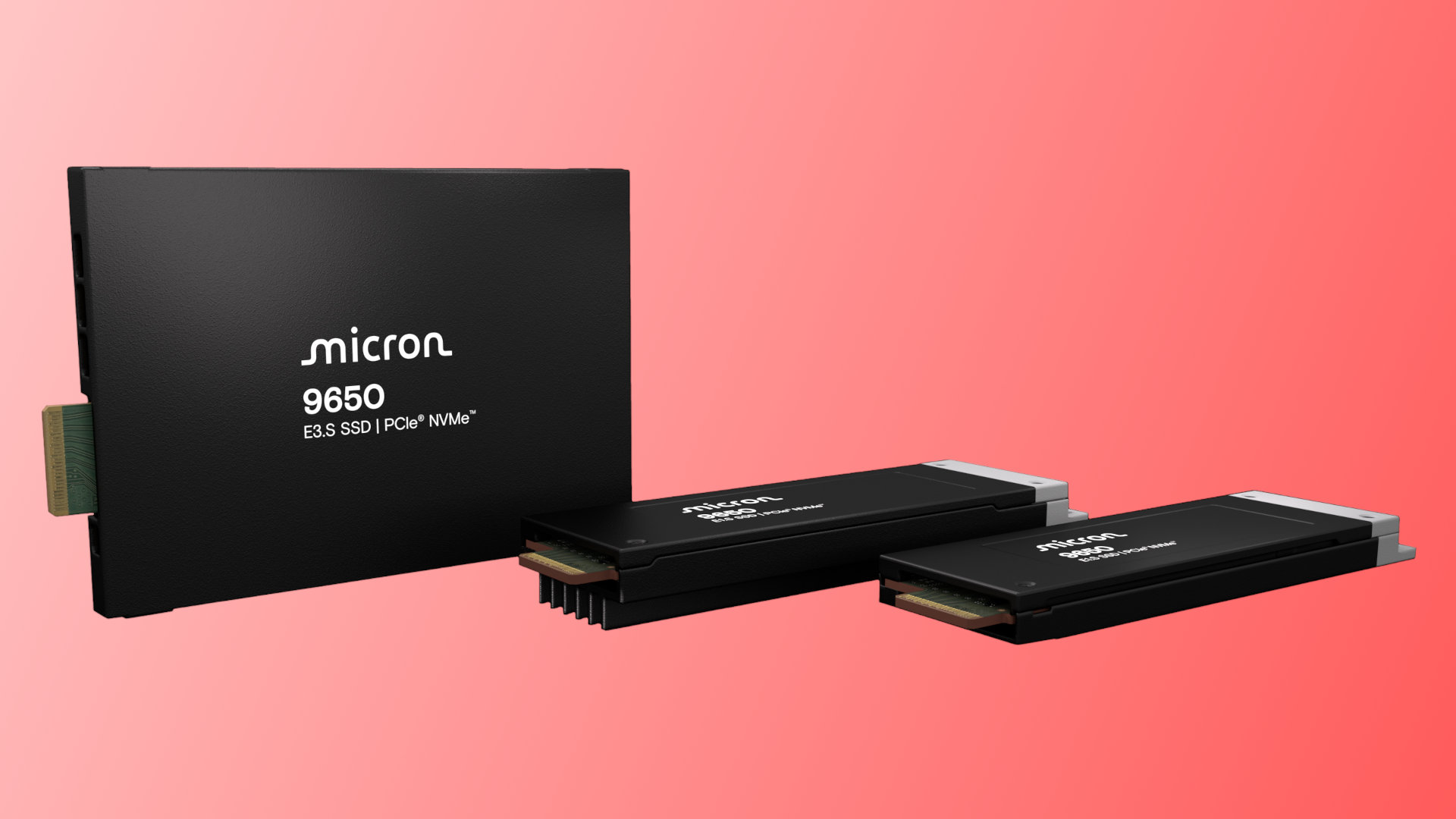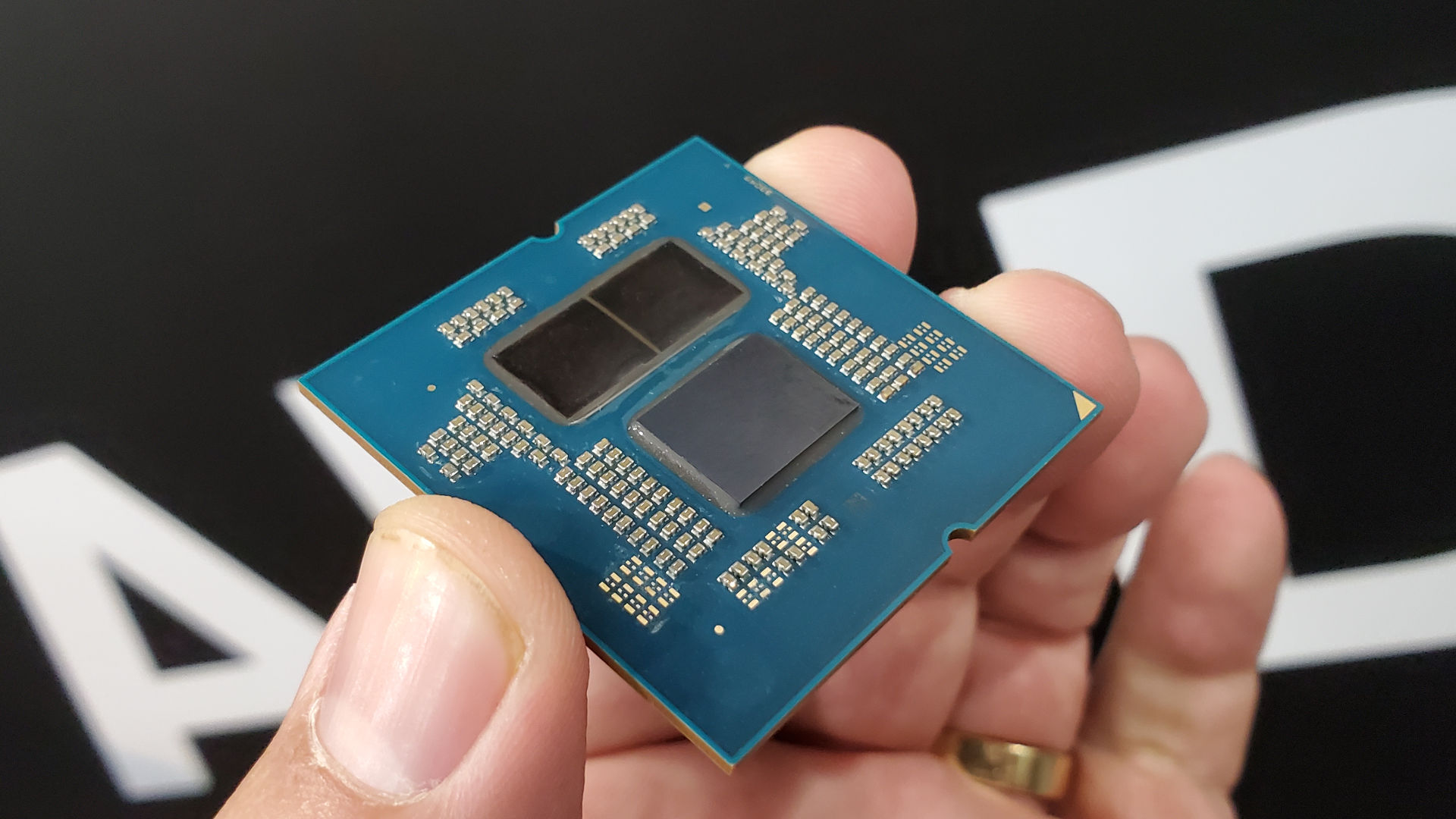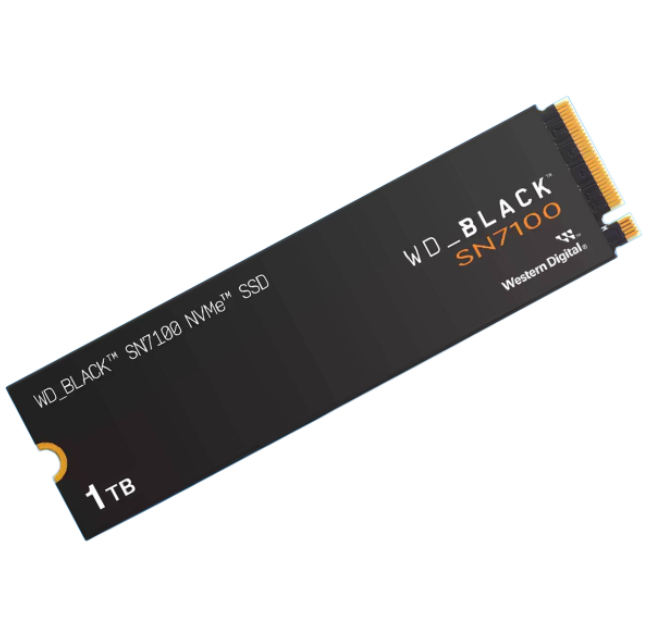Almost a full year after announcing it, Micron finally launches the world's first PCIe 6.0 SSD with up to 28 GB/s sequential read speeds
You're not going to be sticking one in your gaming PC, though, no matter how hard you try to jam it in.

It's been three and a half years since the specifications for PCIe 6.0 were finalised and practically a full year since the first product to use the ultra-fast interface was announced, but the very first Gen 6 SSD is now finally ready to buy. Unless you're a PC gamer, that is, because Micron's new 9650 NVMe SSD is for AI servers only.
Version 6 of PCI Express was rubberstamped back in January 2022, and given its ultra-fast data transfer rates, it was obvious from the beginning that it was never going to appear first in the consumer market. Utilising PAM4 signalling (previously used by Micron for its GDDR6X VRAM chips for some of Nvidia's RTX 30-series graphics cards), each PCIe 6.0 lane can transfer 64 Gbps, bidirectionally.
Consumer-grade SSDs use four PCIe lanes to transfer data back and forth (server-grade models can use more lanes, depending on the socket type used), so the theoretical limit for a Gen 6 M.2 SSD would be 32,000 MB/s. To put that into perspective, the best PCIe 5.0 gaming SSD you can buy right now tops out at 14,900 MB/s.
Micron announced its new PCIe 6.0 SSD last August, and it's a little odd that the company has taken almost an entire year to actually get the drive to market. But no matter, the 9650 NVMe is here at last and boasts all kinds of ridiculous numbers to make you go 'ooh' and 'aah' and 'I want one'.
First up, the capacities on offer. The smallest is a mere 6.4 TB in size, but since that's only enough to store around 50 copies of Baldur's Gate 3, Micron's new drive goes all the way up to 30.72 TB in capacity. It actually offers two variants of the 9650, a Pro model that's "read-intensive, one drive write per day", and a Max version for "mixed-use, three drive writes per day".

Both sport peak sequential data reads of up to 28,000 MB/s (roughly 13% under the PCIe 6.0 limit) and sequential writes of 14,000 MB/s. The 9650 Pro and Max drives differ when it comes to random read/writes, though—the former peaks at 5,500 and 570 kIOPS respectively, whereas the latter's figures are 5,500 and 900 kIOPs.
A SanDisk WD_Black SN8100 has peak random read/writes of 2,300 and 2,400 kIOPs, but a gaming SSD will undergo far more random accesses than any AI server SSD will.
Keep up to date with the most important stories and the best deals, as picked by the PC Gamer team.
But no consumer SSD can touch the Micron 9650 for endurance—how does up to 282,600 TBW sound? The SN8100 is 2,400 TBW at best, if you need something to compare it to. Even the worst-case scenario for the 9650 is still over 14,000 TBW. Of course, server-grade SSDs need to be incredibly durable, especially those involved with AI workloads, where incredible quantities of data get written and read every day.
Now, while PCIe 6.0 is backwards compatible with PCIe 5.0, you won't be able to jam a Micron 9650 into your gaming PC, even if you could afford one. That's because these drives don't use the M.2 socket and instead use an E1.S or E3.S format.

Given that we're only two generations into the PCIe 5.0 era, we won't be seeing anything like the 9650 in a standard PC anytime soon. AMD and Intel won't support PCIe 6.0 in their next round of chips, but there's a small chance that they might for the generation after. However, given the slow uptake of the Gen 5 interface by SSD and graphics card manufacturers, I suspect it will take even longer for Gen 6 to trickle down to the consumer market.
In the meantime, all we can do is look at the likes of the Micron 9650 and make vroom, vroom noises. Yes, I know SSDs don't make a sound, but how else is one supposed to show admiration for the ludicrous speeds? Slap it and say, "This beast can read a full Baldur's Gate 3 in less than six seconds"? Pfff, meaningless. Just go vroom.

1. Best overall:
WD_Black SN7100
2. Best budget:
Lexar NM790
3. Best PCIe 5.0:
WD_Black SN8100
4. Best budget PCIe 5.0:
Crucial P510
5. Best 4 TB:
TeamGroup MP44
6. Best 8 TB:
WD_Black SN850X
7. Best M.2 2230:
Lexar Play 2230
8. Best for PS5:
Silicon Power XS70
9. Best SATA:
Crucial MX500

Nick, gaming, and computers all first met in the early 1980s. After leaving university, he became a physics and IT teacher and started writing about tech in the late 1990s. That resulted in him working with MadOnion to write the help files for 3DMark and PCMark. After a short stint working at Beyond3D.com, Nick joined Futuremark (MadOnion rebranded) full-time, as editor-in-chief for its PC gaming section, YouGamers. After the site shutdown, he became an engineering and computing lecturer for many years, but missed the writing bug. Cue four years at TechSpot.com covering everything and anything to do with tech and PCs. He freely admits to being far too obsessed with GPUs and open-world grindy RPGs, but who isn't these days?
You must confirm your public display name before commenting
Please logout and then login again, you will then be prompted to enter your display name.

